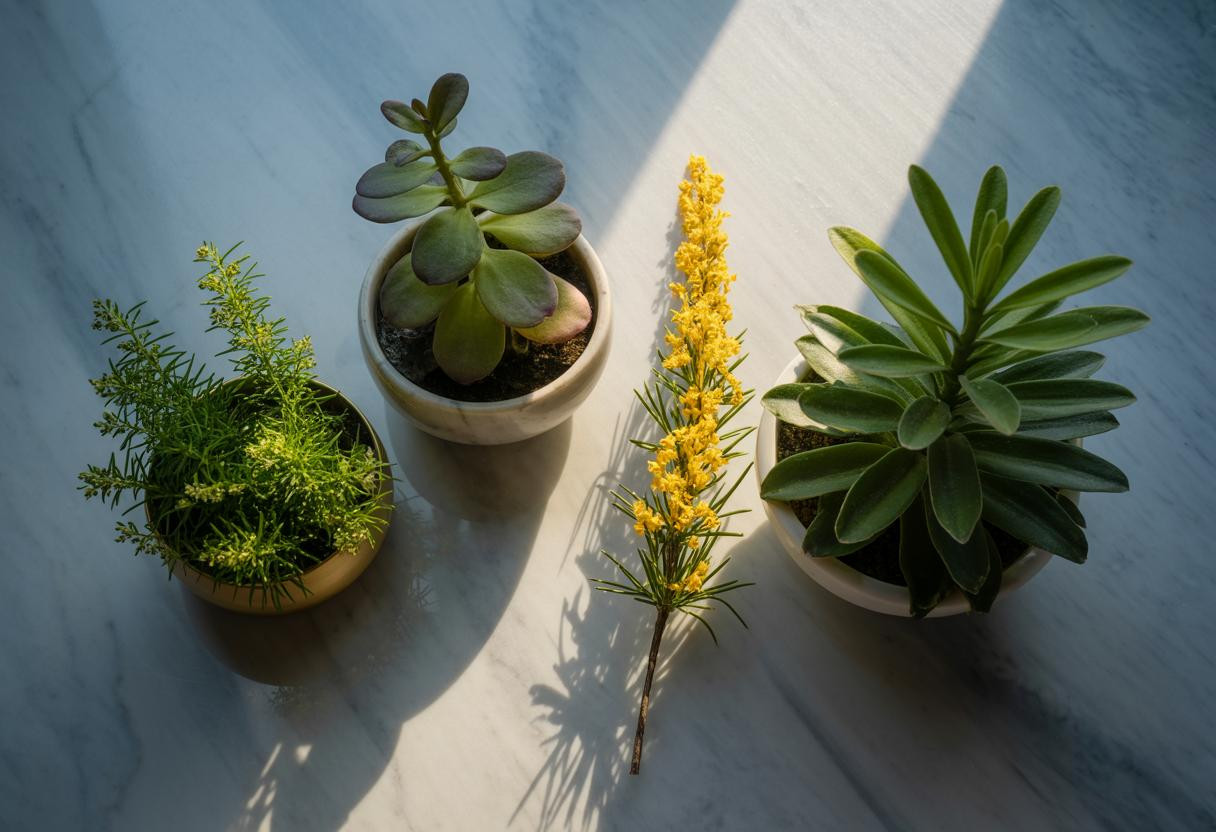When your stomach feels like a balloon ready to burst after every meal, the answer might not be in your medicine cabinet—it could be growing in your garden. Four powerful plants have been quietly revolutionizing digestive health for centuries, and modern research is finally catching up to what traditional healers have always known about their remarkable anti-bloating properties.
The ancient wisdom meets modern gastroenterology
Digestive discomfort affects over 74% of Americans regularly, yet many people overlook the potent botanical remedies that have been used for thousands of years. Recent clinical trials are now validating what herbalists have practiced since ancient times—certain plants contain specific compounds that directly target the root causes of bloating and gas.
Gastroenterologists are increasingly recognizing that plant-based interventions can be as effective as pharmaceutical options for many digestive issues, often with fewer side effects. The key lies in understanding how these botanical mechanisms actually work at the cellular level.
Four plants that transform your digestive experience
Ginger accelerates gastric emptying dramatically
Clinical studies reveal that ginger contains gingerol and shogaol—compounds that speed up gastric emptying by up to 25% compared to placebo. One pivotal study found that participants taking 1-2 grams daily experienced significantly faster movement of food through their digestive system, reducing the bloated feeling that lingers after meals.
However, ginger shows mixed results for IBS symptoms specifically, with some trials showing only a 33.3% response rate versus 57.1% for placebo—highlighting the importance of understanding when and how to use this powerful root effectively.
Chamomile soothes inflammation at the source
Chamomile’s bioactive compounds, particularly apigenin and chamazulene, demonstrate remarkable anti-inflammatory and antispasmodic properties. These terpenoids and flavonoids work by directly soothing mucosal tissue and reducing esophageal spasms that contribute to digestive discomfort.
What makes chamomile particularly interesting is its dual action—while calming digestive inflammation, it also promotes relaxation through the same pathways that make it effective as natural sleep aids like chamomile work for improving sleep quality.
Multi-herb formulations show superior results
STW 5, a combination herbal formula, proves more effective than single herbs alone for treating dyspepsia and IBS. This approach demonstrates how synergistic plant combinations can address multiple digestive pathways simultaneously, though individual component contributions remain understudied.
Chinese herbal medicine formulations show even more dramatic results, with odds ratios of 7.09 compared to placebo for functional constipation—significantly outperforming standard pharmaceutical treatments.
Understanding the surprising placebo complexity
Here’s what most people don’t realize: herbal placebos can produce response rates of 29-46% for abdominal pain and stool improvement. This isn’t a weakness in herbal medicine—it’s actually evidence of how powerfully our digestive system responds to psychological and physiological signals working together.
Younger populations and shorter treatment durations show even greater variability, suggesting that digestive issues often have complex interconnections. This connects to broader wellness patterns, including understanding the gut-skin connection that affects multiple body systems simultaneously.
Practical implementation for maximum digestive relief
Optimal dosing strategies
For ginger: 1-2 grams daily in capsule form provides therapeutic benefits without gastrointestinal irritation. Avoid exceeding 3 grams daily, as higher doses may actually worsen digestive symptoms in sensitive individuals.
For chamomile: 1-2 cups of tea daily optimizes bioactive compound absorption while providing gentle, sustained relief. Monitor for allergic reactions, particularly in those sensitive to ragweed family plants.
Timing and preparation methods
Take ginger 30 minutes before meals to maximize gastric motility benefits. Chamomile works best between meals or before bedtime, allowing its anti-inflammatory compounds to work without food interference.
Fresh ginger root offers different bioavailability than powder forms, while chamomile teas may provide superior absorption compared to standardized extracts for some individuals.
The future of botanical digestive medicine
Research is moving toward understanding exactly how multi-herb formulations create synergistic effects that single plants cannot achieve alone. Scientists are also investigating how individual genetic variations affect plant compound metabolism, potentially leading to personalized herbal prescriptions based on your unique digestive profile.
Future studies will likely explore preventive applications for high-risk groups and address whether chronic bloating and vitamin deficiencies interact with herbal effectiveness in ways we don’t yet fully understand.
Your digestive transformation starts with simple choices
The most powerful aspect of these botanical remedies isn’t just their individual effects—it’s how they work together to restore your digestive system’s natural rhythm. Whether you’re dealing with occasional bloating or chronic discomfort, these plants offer evidence-based alternatives that work with your body’s existing mechanisms rather than against them.
